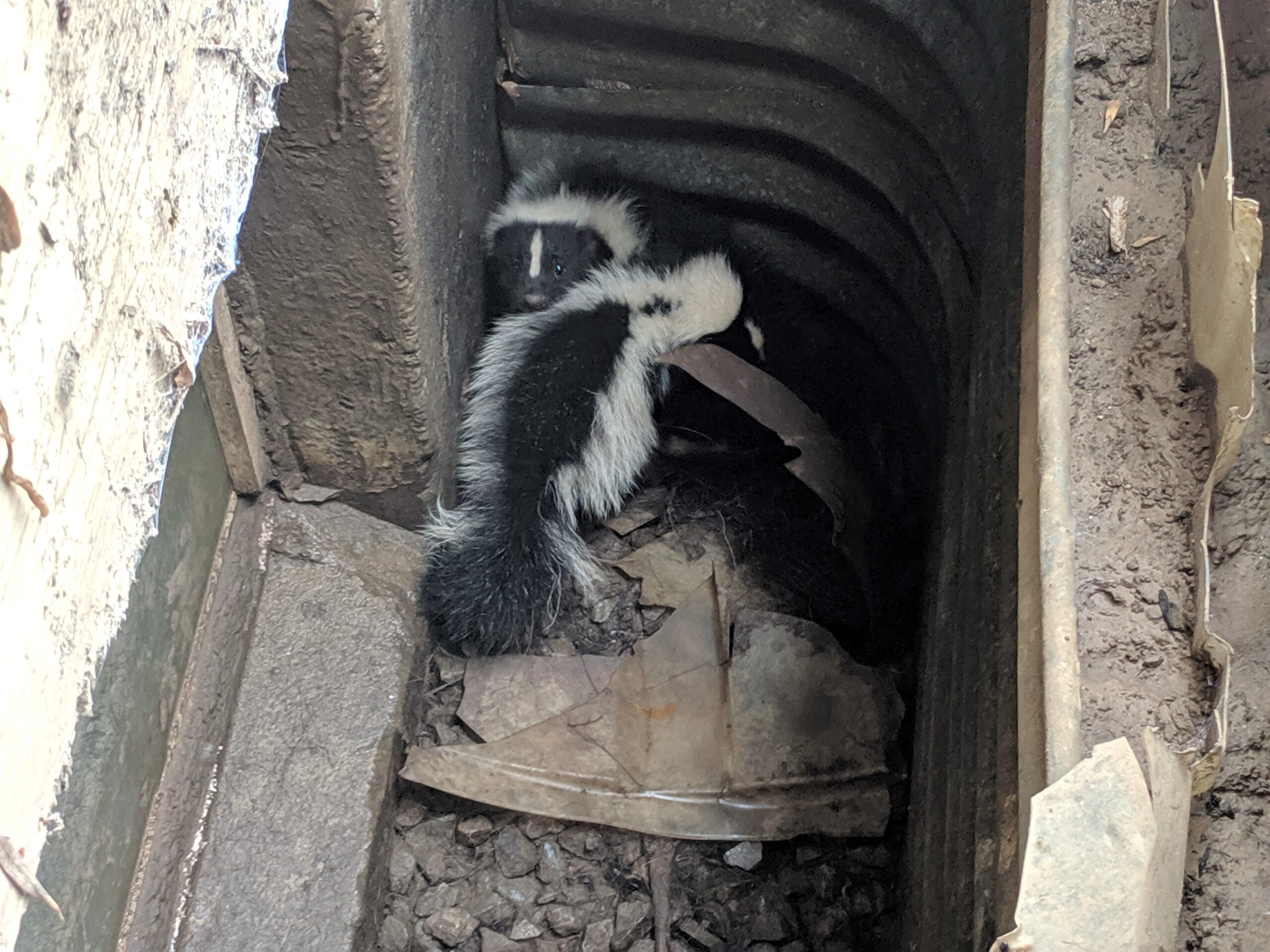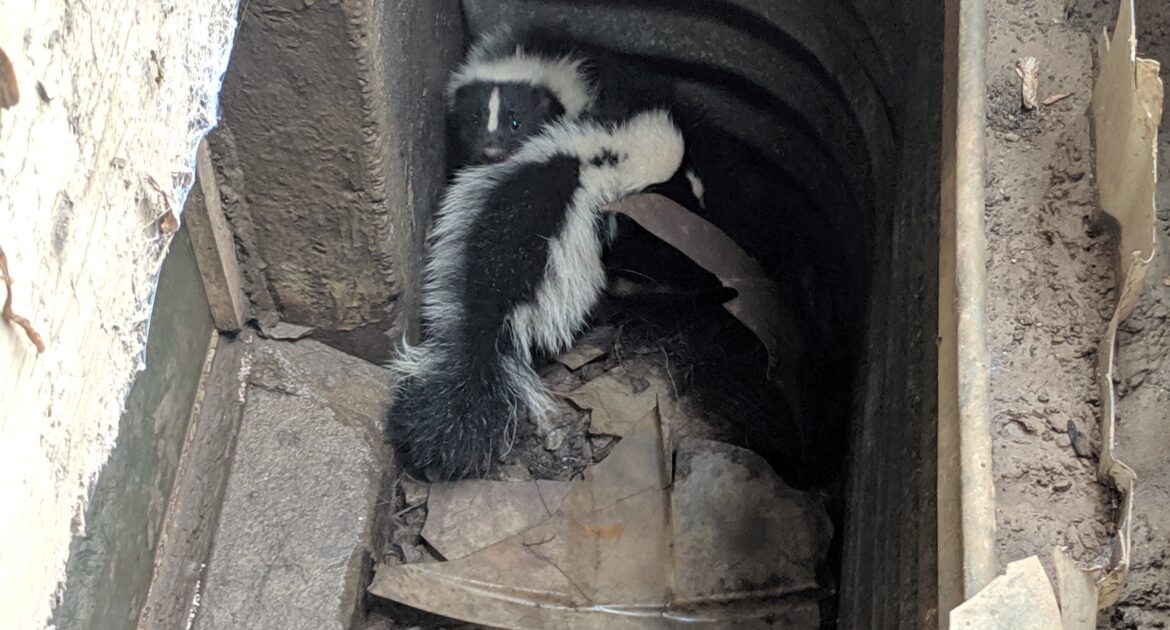If you’ve ever caught the not-so-fresh scent of rotten eggs in the community, you know right away that the most likely culprit is a skunk. These poor creatures have reputations as smelly pests, but they really don’t mean any harm. Skunks are timid mammals with one primary form of defence: a stinky, oily spray.
You do not want to find yourself at the wrong end of a skunk, so if you find one making a cozy den under your deck, stay stink-free by calling the experts in humane wildlife control in Barrie. Skunks seem pretty good at hitting their targets when they lift their tails and take aim, so they must have great eyesight, right? No, not really.
In the Line of Sight
Skunks do most of their living in the nighttime hours. They have eyes that see better in the dark than in the daylight. Even so, their vision is not great. These creatures don’t see fine details well, though they have large pupils, which is good for low-light conditions. They also don’t see a wide range of colours the way humans do. They can only make out shades of grey, blue and yellow.
If you look at a skunk’s face, you notice that its eyes sit right in the front of its head. They don’t have good peripheral vision, so they really only see what is directly in their line of sight, and only if it is around 3 meters away or less. This lack of depth perception and visual acuity is why skunks are easily startled. Baby skunks can’t see at all! They’re blind until they reach about three weeks of age.
On the Wrong Side of the Tail
Even with poor vision, skunks are good at hitting their targets with their spray. A skunk can spray at a distance of about 6 meters away. Though they don’t have great vision, their eyesight is good enough to make heads and tails out of their target’s features, and they almost always aim for the face!
A skunk has two nipples under its tail, one on each side of the anus. It can control the movement of the nipples, pointing it in the direction of the perceived (or real) threat. Skunks either shoot their spray out in a straight line, or they may spray while they rotate their scent glands. What’s more, they can set their tail nozzles to spray at a fine mist or a direct stream.
Though the rotten-egg stench is a good deterrent for most would-be skunk enemies, these critters only use this defence mechanism as a last resort. Once a skunk uses its spray, it takes 10 days to two weeks to replenish the supply. When one of these critters feels threatened, it gives warning signals in the hopes that it doesn’t have to take aim. It stomps its feet, swishes its tail and hisses. When it folds itself into a u-shape, it’s time to head in the opposite direction as quickly as possible.
By Sound and Scent
So how do skunks get around in their environment if they don’t see very well? They do use their eyesight, especially at night, but their other senses play a large part in skunk navigation. Like many nocturnal animals, skunks have a great hearing to warn them of the things that go bump in the night. They also have a keen sense of smell that can lead them to dinner and help them avoid predators.
From the Experts in Humane Wildlife Control in Barrie
If you find a skunk denning on your property, don’t attempt to handle the situation yourself. Let the Skedaddle team take care of it for you. We are experts in skunk removal, and we can do it without getting sprayed. We also ensure the skunks aren’t harmed and take measures to keep them from returning. Contact us today to schedule services.




